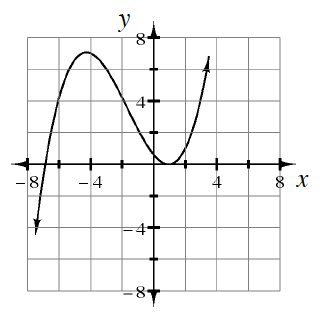
Home > CCA2 > Chapter 8 > Lesson 8.2.3 > Problem 8-104
In parts (a) through (d) below, for each polynomial function
Example:


There will be three linear factors (one repeated), therefore two real (one single, one double) and zero complex (non-real) roots.

There will be one linear factor and one quadratic factor, therefore one real and two complex (non-real) roots.

There will be four linear factors, therefore four real and zero complex (non-real) roots.

There will be two linear and one quadratic factor, therefore two real and two complex (non-real) roots.